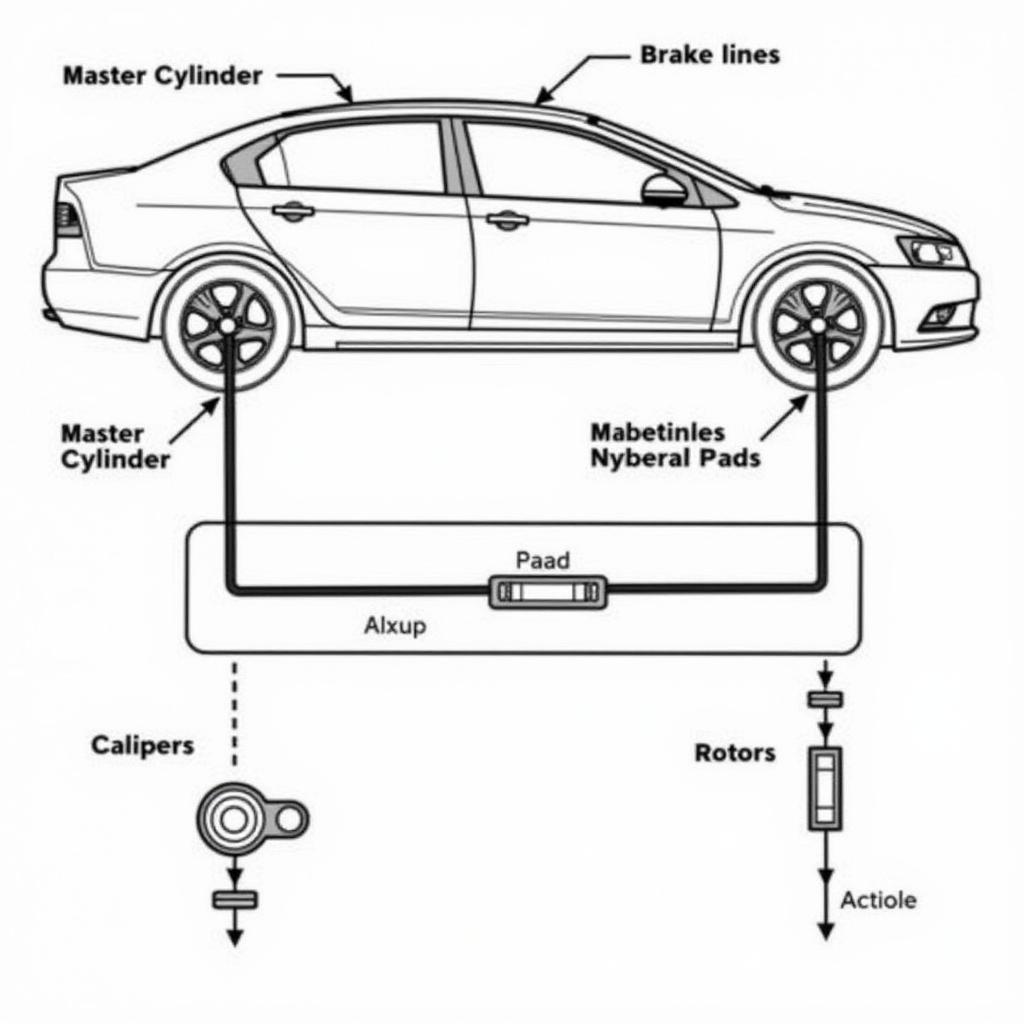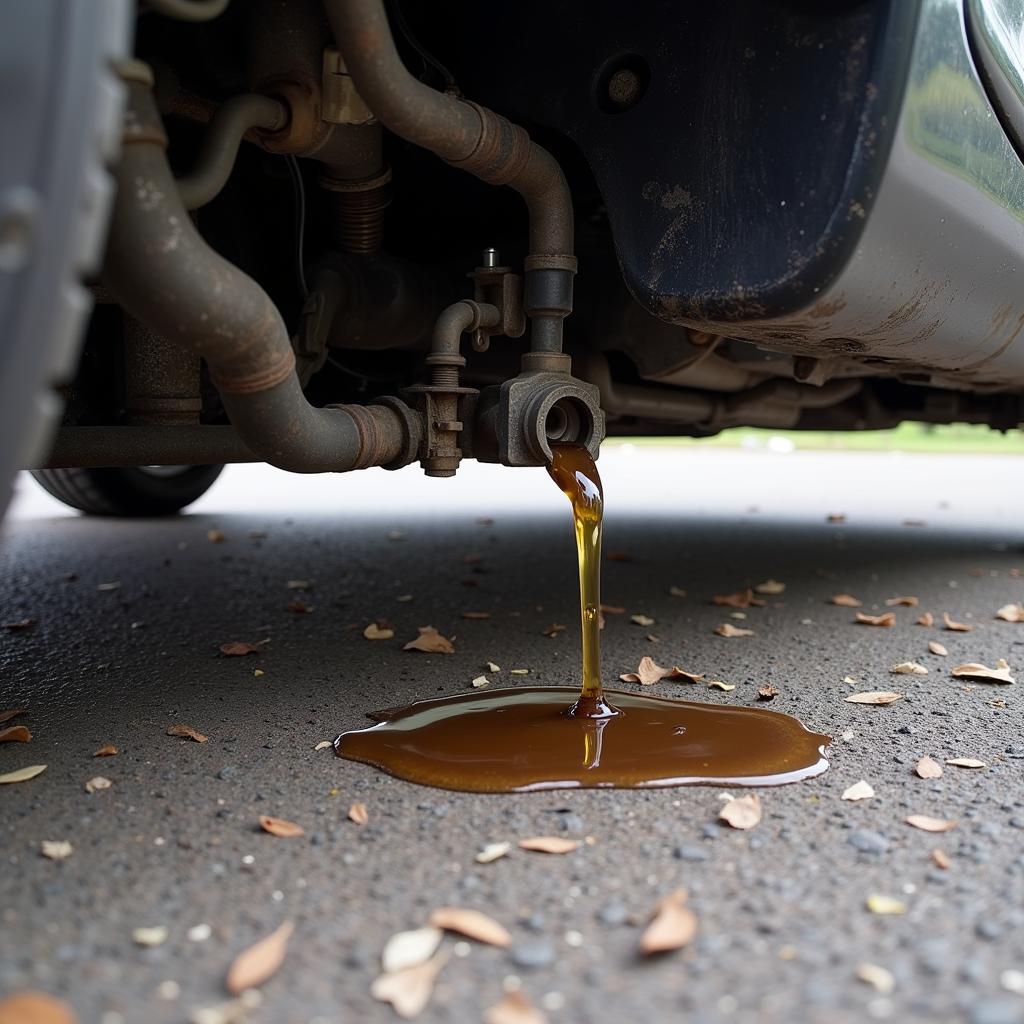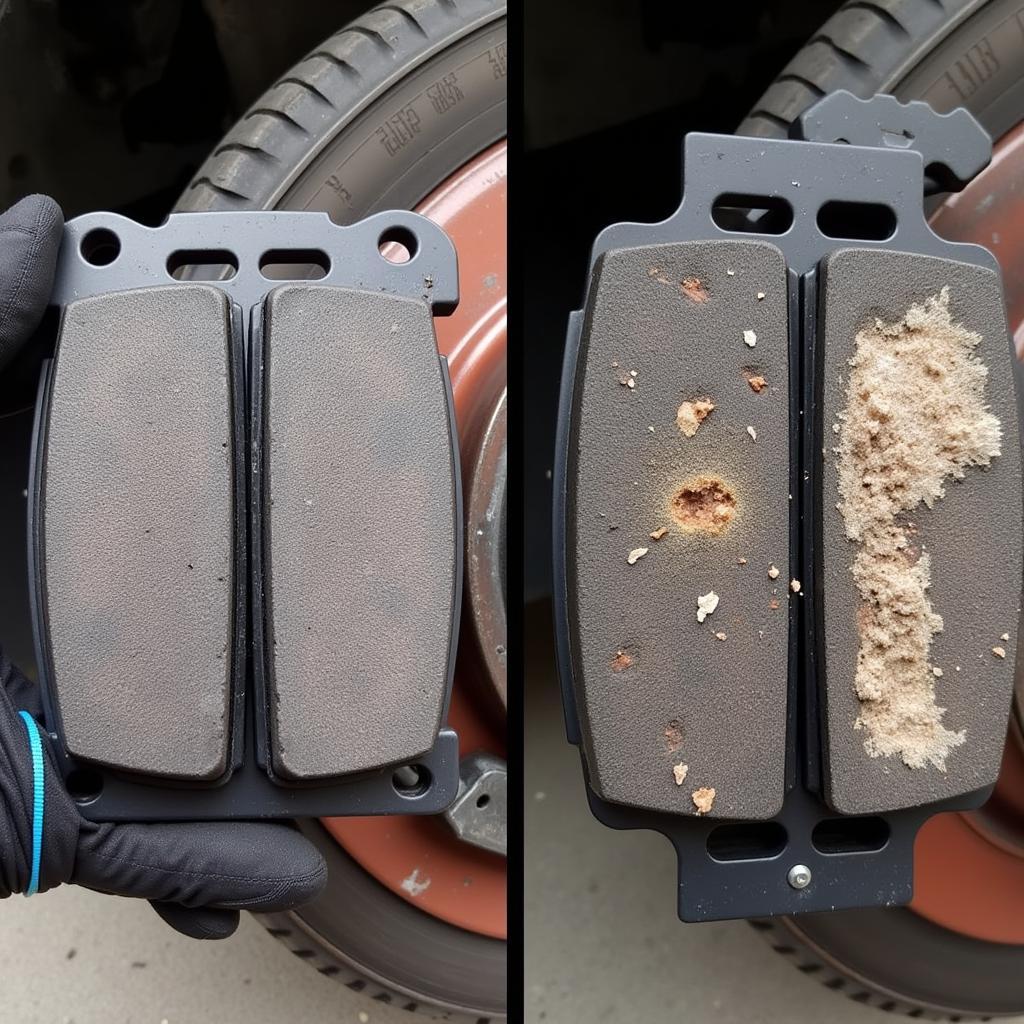The dreaded press brake pedal warning light flashing on your dashboard – a sight no driver enjoys seeing. This light signals a problem with your car’s braking system, demanding immediate attention. Ignoring this warning could jeopardize your safety and lead to costly repairs.
This comprehensive guide will delve into the common causes of the press brake pedal warning light, provide actionable troubleshooting steps, and outline potential solutions.
Understanding Your Car’s Braking System
Before tackling the warning light, it’s crucial to grasp the basics of your car’s braking system. Modern vehicles utilize a sophisticated hydraulic system to transfer force from your foot to the brakes. When you press the brake pedal, it activates a piston in the master cylinder, pushing brake fluid through hydraulic lines to calipers on each wheel. This pressure forces the brake pads to clamp onto the rotors, effectively slowing down or stopping the vehicle.
 Car brake system components diagram
Car brake system components diagram
Common Causes of the Press Brake Pedal Warning Light
Several issues can trigger the press brake pedal warning light. Let’s explore some of the most prevalent culprits:
1. Low Brake Fluid Level
One of the most common reasons for the warning light is low brake fluid. As brake pads wear down over time, the brake fluid level naturally decreases. However, a sudden drop in fluid level often indicates a leak, posing a serious safety hazard.
2. Brake Fluid Leak
A leak in the braking system can lead to a significant loss of brake fluid, compromising your ability to stop the car effectively. Leaks can occur in various components, including brake lines, hoses, calipers, and the master cylinder.
 Brake fluid leak under car
Brake fluid leak under car
3. Faulty Brake Master Cylinder
The brake master cylinder plays a critical role in generating the hydraulic pressure necessary for braking. If the master cylinder malfunctions due to internal seals wearing out or corrosion, it can trigger the warning light and cause inconsistent braking performance.
4. Worn Brake Pads
Brake pads have a finite lifespan. As you apply the brakes, friction gradually wears down the pad material. Excessively worn brake pads reduce braking efficiency and can also activate the warning light.
 Comparison of worn and new brake pads
Comparison of worn and new brake pads
5. ABS (Anti-lock Braking System) Issue
Modern cars often feature ABS to prevent wheel lockup during hard braking. If the ABS system malfunctions due to a faulty sensor or control module, it can trigger the warning light.
Troubleshooting the Press Brake Pedal Warning Light
If the press brake pedal warning light illuminates, it’s crucial to address the issue promptly. Here are some steps to help you troubleshoot the problem:
- Check Your Brake Fluid Level: Park your car on a level surface and locate the brake fluid reservoir under the hood. Consult your owner’s manual for its exact location. If the fluid level is below the “MIN” mark, add the appropriate brake fluid.
- Inspect for Leaks: Carefully examine the area around the brake fluid reservoir and the brake lines running beneath the car. Look for any signs of fluid leaks, which may appear as wet spots or puddles.
- Check Brake Pedal Feel: Does the brake pedal feel spongy, soft, or go all the way to the floor? This could indicate air in the brake lines or a significant fluid loss.
- Listen for Unusual Noises: Pay close attention to any unusual noises while applying the brakes, such as grinding, squealing, or clicking. These sounds often signal worn brake pads or other brake component issues.
When to Seek Professional Help
If you’re unable to identify the cause of the warning light or suspect a serious issue, it’s imperative to seek professional assistance.
For instance, if you notice a brake fluid leak, especially in the 2000 Pontiac Grand Prix brake warning light system, seeking immediate professional help is critical. Similarly, if the parking brake warning light stays on despite disengaging the parking brake, it indicates a potential malfunction requiring expert diagnosis.
Professional mechanics possess the expertise and specialized tools to diagnose and repair complex brake system problems. Attempting DIY repairs on critical safety systems like brakes is strongly discouraged unless you have the necessary skills and experience.
Conclusion
The press brake pedal warning light serves as a vital safety indicator, alerting you to potential problems with your car’s braking system. Addressing this warning promptly can prevent accidents and ensure your safety on the road.
By understanding the common causes, performing basic troubleshooting, and seeking professional help when necessary, you can effectively address this warning and keep your car’s braking system in optimal condition.

